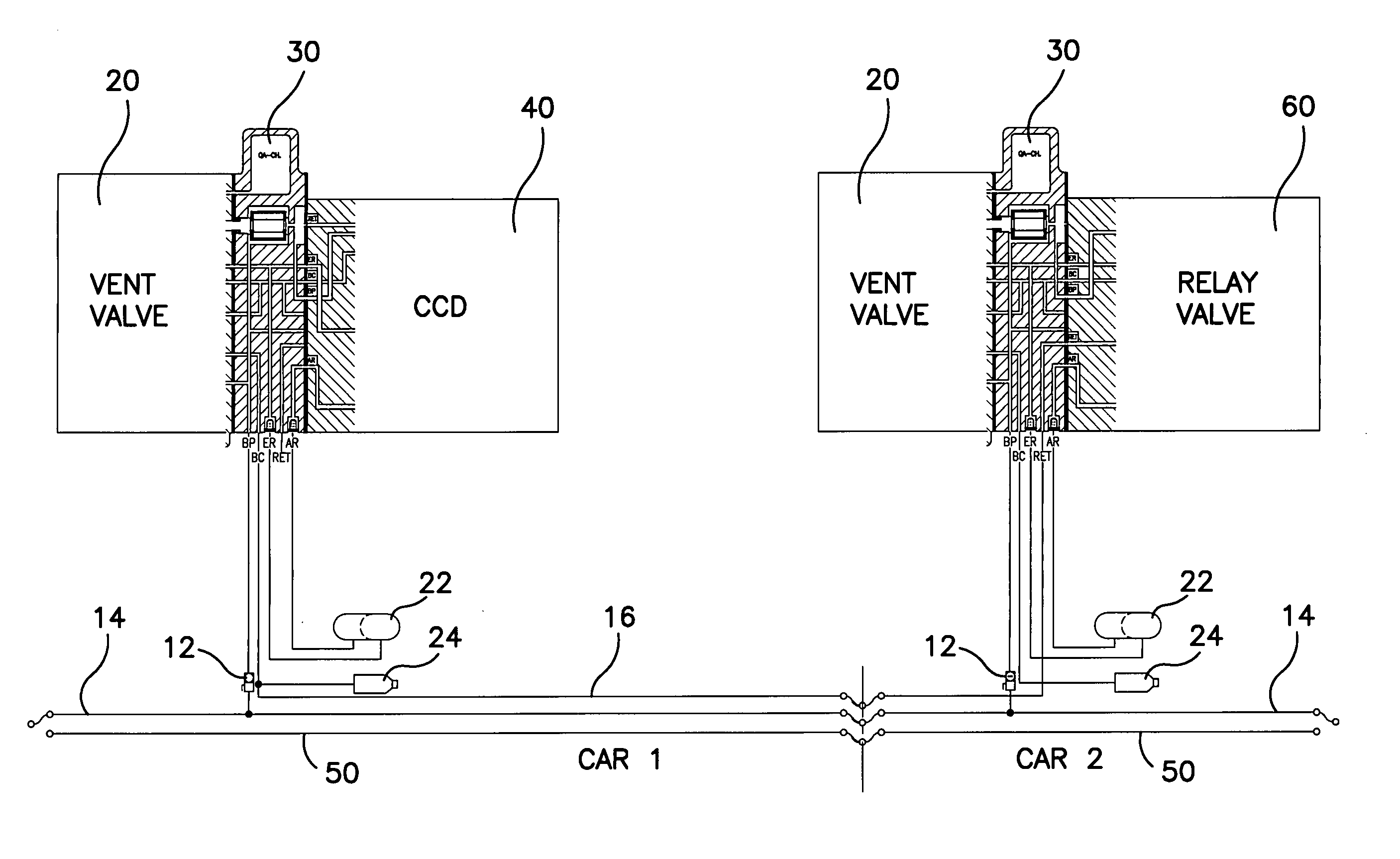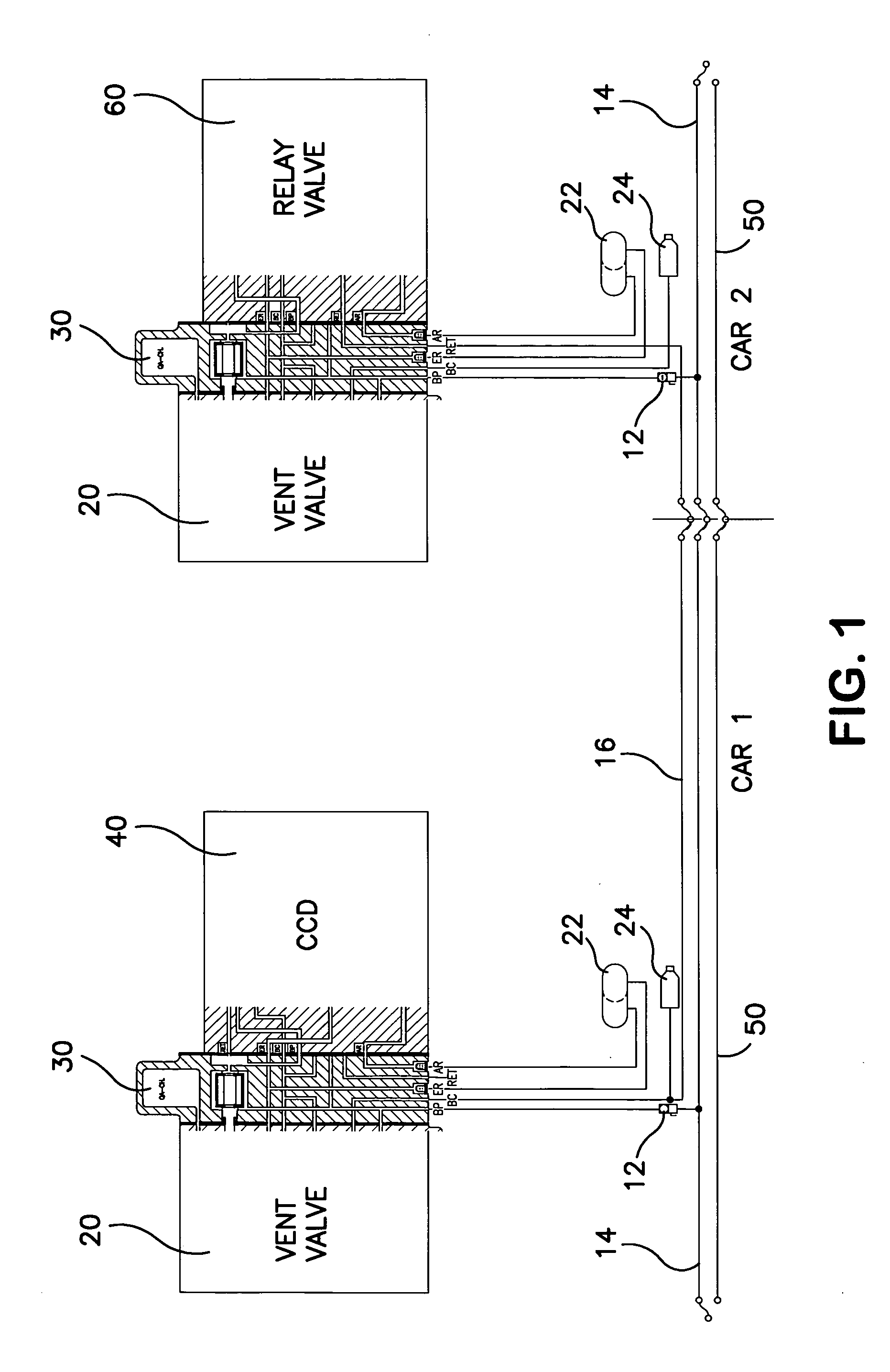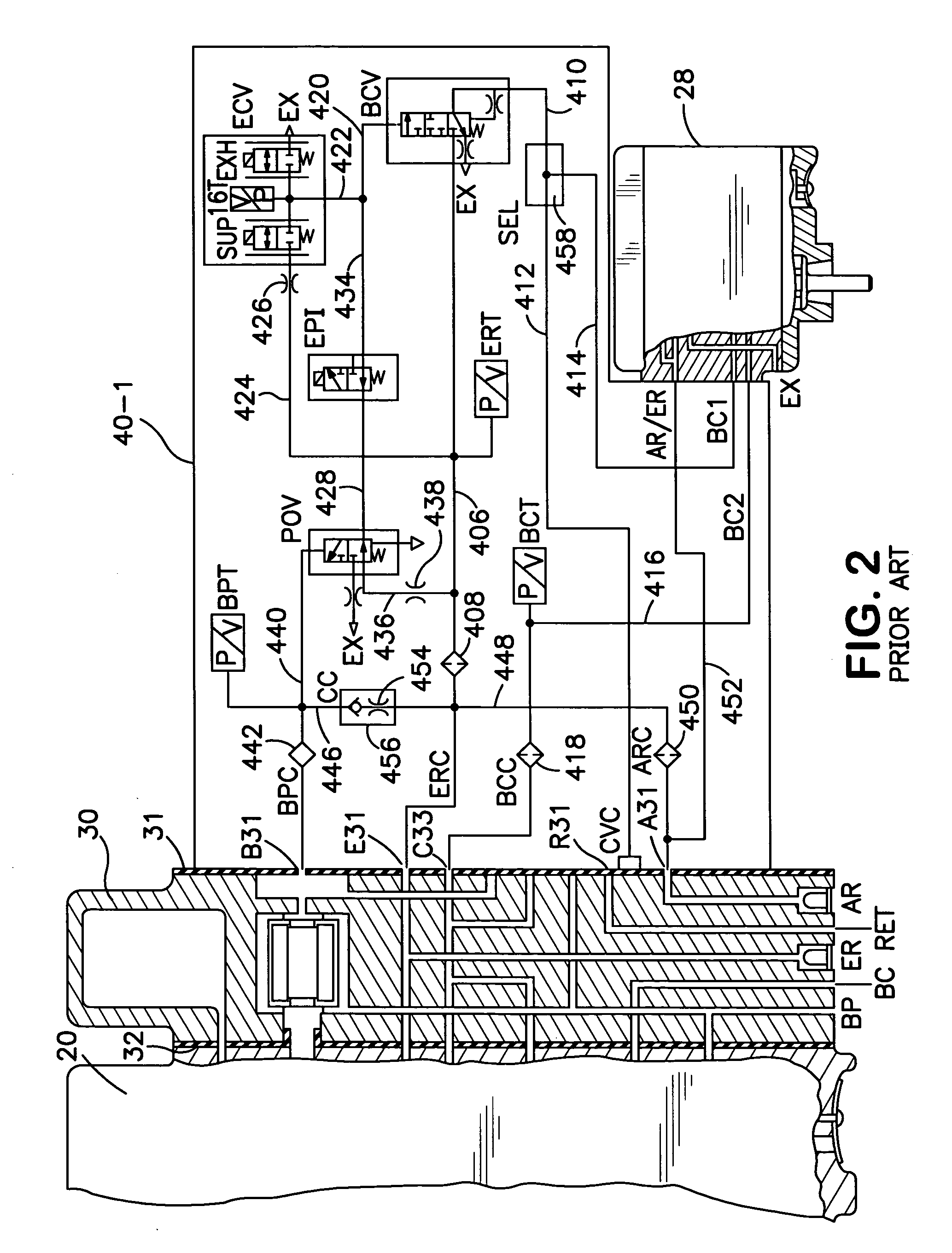Relay configuration for an electro-pneumatic train
a technology of electro-pneumatic trains and relay configuration, which is applied in the direction of braking systems, braking components, transportation and packaging, etc., can solve the problems of increasing the cost of installing an electro-pneumatic control device on each railroad car, and the use of electro-pneumatic-pneumatic valves in freight trains is very limited, so as to reduce the number of electro-pneumatic brake control valves
- Summary
- Abstract
- Description
- Claims
- Application Information
AI Technical Summary
Benefits of technology
Problems solved by technology
Method used
Image
Examples
Embodiment Construction
[0019] As shown in FIG. 1, two cars are interconnected by a brake pipe 14 and an electrical train line 50, which carries power and communication signals to the various electropneumatic brake control valves. An additional pipe 16 connects the first and second cars. As will be described below, pipe 16 is either a new pipe or an existing pipe within the train. Various trains have a holding brake pipe, which is not used in the present electropneumatic brake control systems and, therefore, is available. Each of the cars includes a standard manifold 30 connected via cut-off valve 12 to the brake pipe 14. A pair of reservoirs 22 are also connected to the manifold 30, as is the brake cylinder 24. The standard inlet ports of the manifold 30 are brake pipe BP, brake cylinder BC, emergency reservoir ER, auxiliary reservoir AR and an exhaust / retainer port RET.
[0020] On car 1, an electropneumatic brake control valve 40 is mounted on the service interface for the pipe bracket 30. These devices a...
PUM
 Login to View More
Login to View More Abstract
Description
Claims
Application Information
 Login to View More
Login to View More - R&D
- Intellectual Property
- Life Sciences
- Materials
- Tech Scout
- Unparalleled Data Quality
- Higher Quality Content
- 60% Fewer Hallucinations
Browse by: Latest US Patents, China's latest patents, Technical Efficacy Thesaurus, Application Domain, Technology Topic, Popular Technical Reports.
© 2025 PatSnap. All rights reserved.Legal|Privacy policy|Modern Slavery Act Transparency Statement|Sitemap|About US| Contact US: help@patsnap.com



